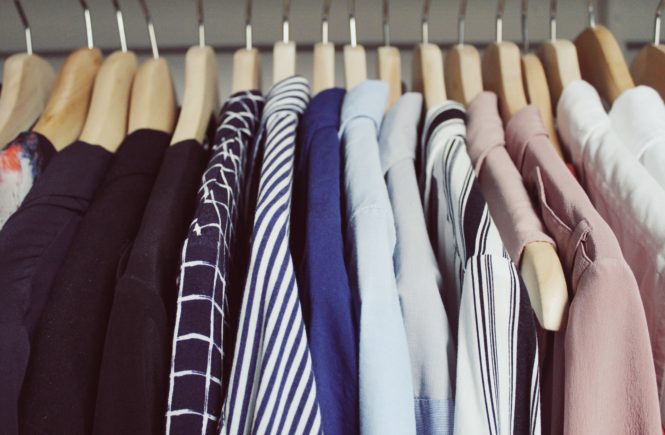Tencel, hemp, GOTS, Pinatex, and modal are only a few of the materials and certifications we’re reading about when it comes to sustainable fabrics. Innovative and natural materials that are increasingly being used in fashion, but understanding what they all are, and what’s actually sustainable and what isn’t, is a different matter. It’s often confusing and often controversial, with greenwashing and personal values being part of the mix – so how do we know how to make the best conscious decisions?
The reasons for change
Sustainable fashion is fascinating, innovative, progressive, inspiring. But it’s also confusing, especially when it comes to trying to define it. Many will also argue that it’s an oxymoron because fashion itself, the way it is produced and consumed today, isn’t sustainable. But for us who want to continue enjoying fashion, whilst doing it in a more sustainable way, we are thankfully seeing innovative initiatives when it comes to production, materials and the circular economy.
The reasons for the developments are environmental and social, as chemicals and plastics are bad both for the planet and the people who create our clothing. And when it comes to the plastic used to create fabrics like polyester it’s also affecting us once the piece of clothing is created with microplastics being released in the water when washed. We’re also seeing the need for these developments because of the fact that we’re running out of resources and we need to be better at using what we already have.
Another reason for new innovative fabric solutions, is the rise in veganism and non-animal alternatives, with brands like Stella McCartney leading the way in using alternatives to materials like leather.
The confusing jungle of fabrics
The increase in man-made materials and the comeback of some natural ones means there are now all sorts of options, which is of course good but can also be confusing. Especially if you’re trying to judge or grade them based on sustainability and other conscious aspects.
Polyester and other fabrics that come from oil are naturally on the black list but there are shades of grey when it comes to most materials. Cotton is a tricky one – it’s natural and comfortable, but it requires a lot of resources to grow and produce. The same goes for bamboo, which is seen as a more sustainable material as it’s easy to grow, but to actually create textile fibres it’s resource and chemical heavy. So, looking for organic options here is crucial, but even so, not buying too much of it is even more important.
Instead, increasingly popular natural materials such as hemp and linen are probably better options, as are new and innovative ‘man-made’ ones such as Tencel, made from sustainable softwoods. A run-through of all the sustainable materials requires its own post for some other time but sites like Mochni have done useful guides, and if you can read Swedish (or if you’re good with Google translate), Swedish slow fashion blogger Johanna has put in a lot of work to explain various materials.
How do you decide what to buy?
A first step on the sustainable fabrics journey is of course to create an awareness and be more conscious of what you do buy. What materials do you like but also, what values are most important? Just going for something ‘sustainable’ probably won’t cut it because people put different values into this term.
Last week’s #EthicalHour chat on Twitter touched on these issues with a lot of people feeling confused or even misguided by brands and their labelling. Trying to learn the main (proper!) certifications like GOTS will definitely help you in separating the truly organic products from those ‘semi-organic’ with some semi-dodgy label created by the brand itself to give a light of being environmentally friendly. Once you know what to look for you then need to base your purchasing decisions on your own values, and create some sort of grading system that works for you. Are you looking for organic products, vegan ones, locally and ethically produced ones, or non-plastic ones?
The circular economy is working better and better and so is recycling. But when using recycled polyester for example, we still have the issue of using and washing the polyester, releasing microplastics into our oceans. The same issue goes for some vegan options, where plastic is often used instead of materials such as leather, but when the plastic ends up in our oceans it’s harming life under water. From a sustainability perspective one could also argue the benefits of a consciously produced leather product that will last a lifetime compared to a vegan plastic one that will need to be replaced again and again.
ASOS announced this week that it’s banning silk, cashmere and mohair from its website, but because of the fact that this issue isn’t black and white, the announcement got questioned by sustainable fashion advocates such as Vogue Australia’s sustainability editor Clare Press.
Everything in moderation
Whatever materials we chose to buy, based on our own values, what we all need to be doing is to buy less. At the moment we’re using up our resources at a worrying speed and until we’re truly circular, we can’t go on as we are. We should find a few natural materials that we like – based on our beliefs and morals – stick to those but reduce the amount we buy. In the words of Vivienne Westwood, we should buy less, choose well, and make it last. Find natural and sustainable materials that we like and that are of good quality to ensure they last.


I think moderation is the key. If for example we all used organic cotton then we’d have no land left for anything else. For me the best fabric is the one that already exists, therefore secondhand is my preference and using the fabric that I already bought a long time ago (I am a home dressmaker). Also I am not completely against synthetics like polyester and nylon, it has a lot of useful purposes (windbreakers, tents for example). And some high end polyester can be more expensive than silk – if it’s a luxury garment to be treasured then I won’t write that off either!
Yes, moderation is definitely key – we can’t continue consuming like we do, even if the fabric is supposedly sustainable! Quality is probably also something to aim for – if the garment is of good quality (whatever the fabric) then it’s bound to last longer 🙂